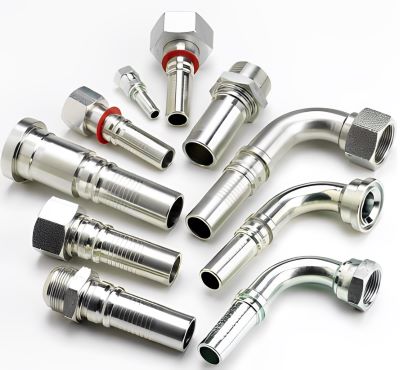Fluid systems play a vital role in various industries, from manufacturing and construction to energy and transportation. The efficient and reliable assembly of these systems is crucial for ensuring optimal performance and safety. The choice of fittings is a key factor in achieving these goals.
In recent years, swage fittings have emerged as a preferred solution for fluid system assembly. Their unique design and benefits offer significant advantages over traditional fitting methods.
What is Swage Fitting?
Swage fitting is a type of mechanical fitting used to connect tubing or pipes in a fluid system. It involves the use of a specialized tool to compress a ferrule around the tubing or pipe, creating a tight and secure seal.
Key Components of a Swage Fitting System
A typical swage fitting system consists of three main components:
➡️ Body: The main part of the fitting that houses the ferrule and provides the connection point.
➡️ Ferrule: A metal ring that is compressed around the tubing or pipe to create the seal.
➡️ Swaging Tool: A specialized tool used to apply pressure to the ferrule, compressing it around the tubing or pipe.
How Swage Fitting Differs from Other Fitting Types
Swage fittings offer several advantages over traditional fitting methods, such as threaded or flanged connections. They are typically more compact, easier to install, and provide a more reliable seal.
The Benefits of Swage Fitting in Fluid Systems
Enhanced Leak Prevention for High-Pressure Applications
Swage fittings are particularly well-suited for high-pressure applications due to their ability to provide a tight and secure seal, minimizing the risk of leaks.
Improved Durability and Strength for Long-Term Use
Swage fittings are designed to be durable and strong, ensuring long-term performance and reliability.
Cost Efficiency and Reduced Maintenance Requirements
Swage fittings can be more cost-effective than traditional fitting methods in the long run, as they often require less maintenance and have a longer lifespan.
Faster, More Efficient Installations
Swage fittings can be installed more quickly and efficiently than traditional fittings, reducing downtime and improving productivity.
Types of Swage Fittings and Their Uses
Single Ferrule vs. Double Ferrule Swage Fittings
There are two main types of swage fittings: single ferrule and double ferrule. Single ferrule fittings are typically used in low-pressure applications, while double ferrule fittings are better suited for high-pressure and high-temperature environments.
Choosing the Right Swage Fitting for Specific Applications
The choice of swage fitting depends on various factors, including the type of tubing or pipe, the pressure and temperature requirements, and the specific application.
Common Industries Relying on Swage Fitting Technology
Swage fittings are used in a wide range of industries, including:
➡️ Oil and gas
➡️ Aerospace
➡️ Automotive
➡️ Manufacturing
➡️ Construction
How Swage Fitting Transforms Fluid System Assembly
Streamlining Complex Piping Installations
Swage fittings can significantly streamline complex piping installations, reducing the time and effort required.
Reducing Downtime with Quick, Secure Connections
The ability to quickly and securely connect tubing or pipes using swage fittings can help to minimize downtime.
Ensuring Precision in High-Pressure and High-Temperature Environments
Swage fittings are ideal for applications where precision and reliability are critical, such as high-pressure and high-temperature environments.
Best Practices for Installing Swage Fittings
Step-by-Step Guide to Proper Installation
Proper installation is essential for ensuring the performance and reliability of swage fittings. Make sure you use the right tools and carefully follow the manufacturer’s directions.
Avoiding Common Mistakes in Swage Fitting Assembly
Avoid common mistakes such as using the wrong ferrule size or applying insufficient pressure during swaging.
Tips for Inspecting and Maintaining Swage Fittings Over Time
Regular inspection and maintenance are important for ensuring the continued performance of swage fittings. Check for signs of wear or damage, and replace fittings as needed.
Conclusion
Swage fittings have revolutionized fluid system assembly, offering numerous benefits in terms of performance, efficiency, and reliability. As industries continue to evolve and demand more advanced solutions, swage fittings are poised to play an even more critical role in the future.
Post time: Oct-15-2024


